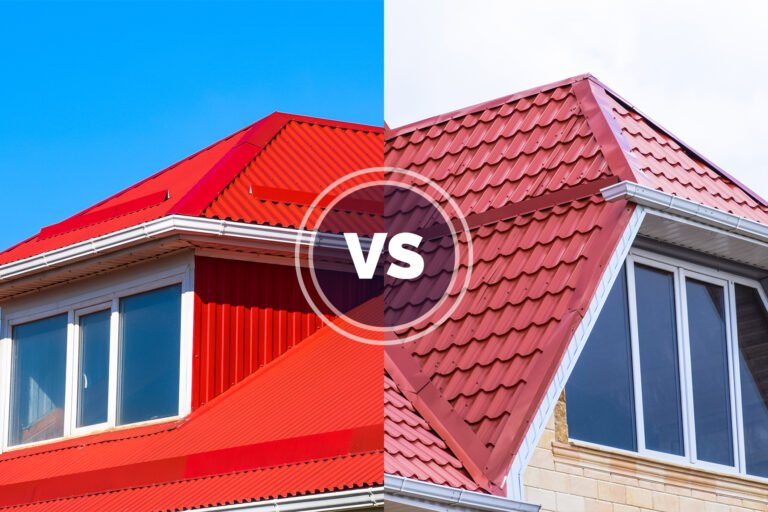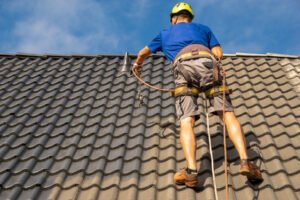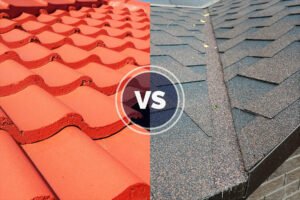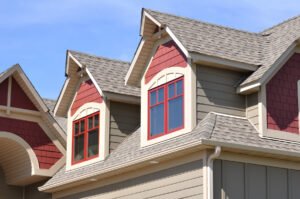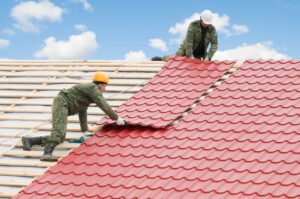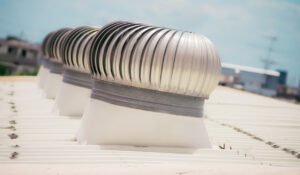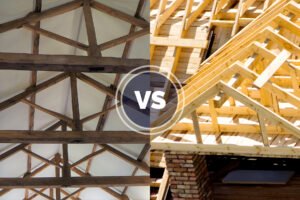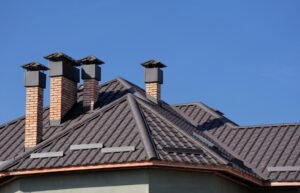Every house needs a strong and weather-resistant roof on a budget. So, different roofing options like metal panels and shingles are a must! But since a metal roof and shingle roof have distinct materials, they’ll affect the heat, humidity, and curb appeal in their own way.
So today, we’ll compare metal and shingle roofs on different aspects and help you pick the most durable and cozy roofing for your needs. Let’s get started!
Key Takeaways
- One major difference between metal and shingle roofs is that metal roofs are thin and light, but shingles are thick and expensive, with hefty extra charges.
- Shingle roofs have high moisture resistance and suit coastal or tropical areas. But, metals can better withstand extreme climates.
- Metal roofs are more energy efficient and reduce cooling costs. In comparison, shingles absorb heat and need different roofing vents for ventilation.
- Metal roofs are more fire and wind-resistant, whereas shingles are not. But that’s not all! Check the comparison table for more information!
What is a Metal Roof?
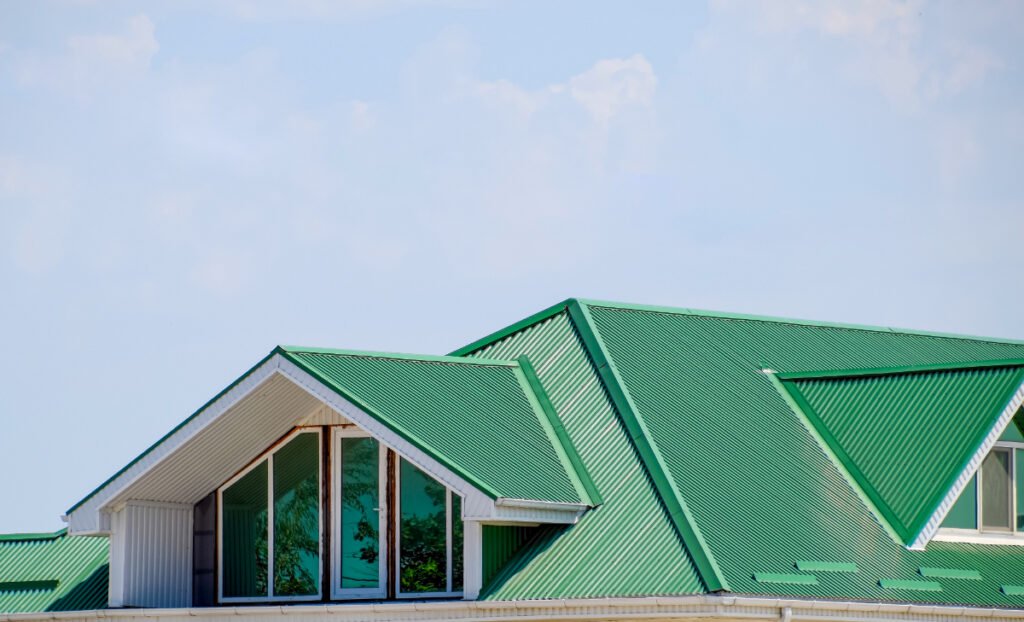
Metal roofs are thin galvanized steel or zinc-coated aluminum panels installed over steel rafters. They are lighter than shingles and use a thin 26-gauge steel section. So, they bend easily and adapt to different planar and curvilinear roof shapes.
A metal roof is also more weather-resistant than shingles. Of course, they might rust, but you can reglaze them with enamel solutions and lubricants. So, they are more durable and cost-effective in the long run.
You can even get them in 100+ shades, colors, and textures. So, they are more versatile than shingle roofs and can adapt to traditional and modern houses.
Lastly, metal roofs don’t need extra insulation to control the heat and humidity. But, this also makes them more vulnerable to weathering and warping. So, you might incur more labor and repair costs with them.
| Average Cost | $3 – 5 per square foot; $9000 – 14000 for the whole roof |
| Average Lifespan | 40 – 70 years |
| Standard Sizes and Thickness | 8 X 12 feet with an 18, 20, 24, and 26-gauge thickness |
Use grease, vinegar, and neem oil to scrub the roof rust without damaging its surface.
What is a Shingle Roof?
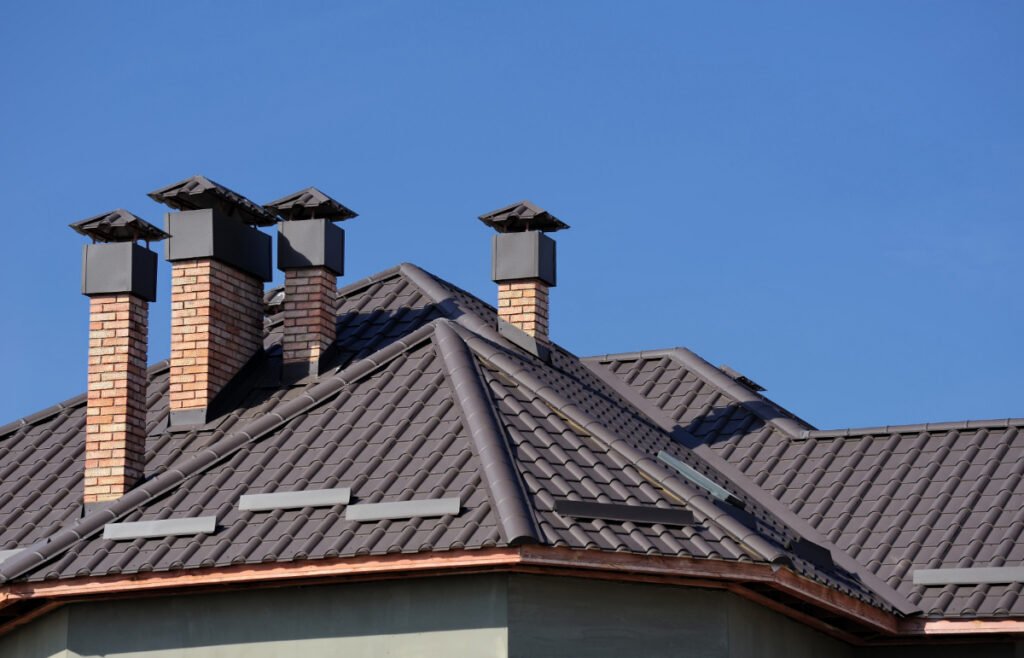
Shingle roofs are lego-like roofs made of flat, rectangular, and overlapping roof tiles. These roofs are simply screwed to the rafters and can adapt to high-pitch and low-pitch roofs. So, they have faster installation than metal roofs and need less labor and machinery.
Plus, shingles have a higher warranty than metal roofs and cover various defects and fungus. So, you can freely use them in temperate and coastal zones without extra coating. But, you must add a gutter to save them from moisture.
However, shingles have limited colors, patterns, and textures. And they can even discolor easily due to sun and rain exposure. So, you might need heavy repairs and replacements, costing $5000 more than metal roofs.
Likewise, shingles are also heavier and might overburden your roof trusses. They aren’t recyclable like metal panels and might harm the environment potentially. So, limiting them to extreme, humid climates or higher foot-traffic areas is best.
| Average Cost | $4 – 5 per square foot; $12000 – 15000 for the whole roof |
| Average Lifespan | 15 – 30 years |
| Standard Sizes and Thickness | 16, 18, and 24-inch long shingles with varying widths |
Use single-ply shingles and add bitumen waterproofing to reduce the roof weight and installation costs.
Differences Between a Metal Roof & Shingle Roof
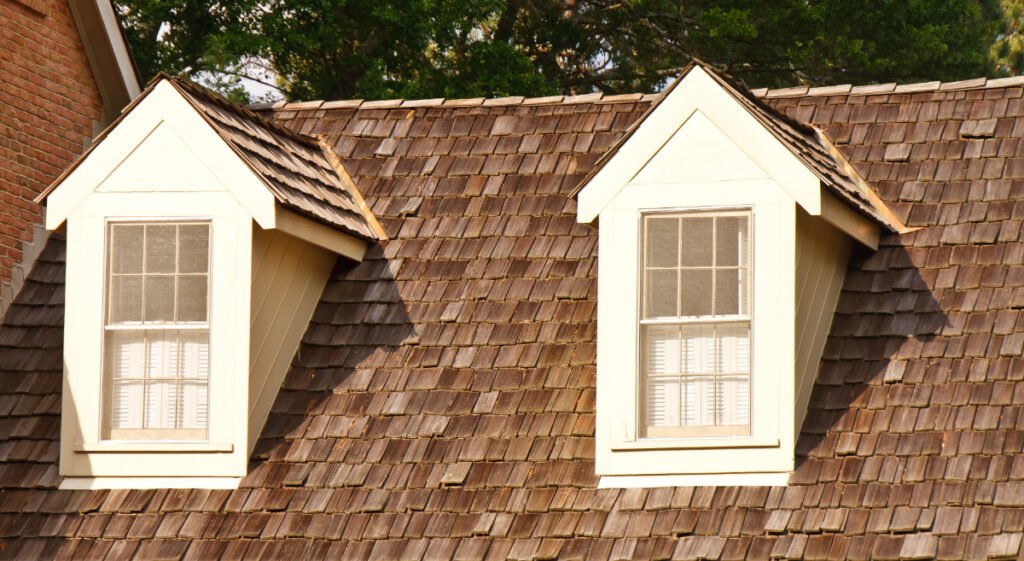
Both metal panels and shingles offer an excellent cover but differ in their look and costs. So, let’s compare them and pick the best roofing solution for your house.
1. Appearance
Metal roofs are adaptable and have light and dark shades to suit different sidings. Generally, galvanized roofs look modern and industrial, whereas corrugated ones appear classical. But you can even paint the metal roof with epoxy paint for a farmhouse look.
In contrast, conventional shingles are traditional and might not suit modern hip roofs. So, you’ll need costly resin-fused or solar shingles for a modern look.
Replace discolored shingles with Gray, Driftwood, or Green tiles for high curb appeal.
2. Durability
Metal roofs are durable and last 30 – 70 years without discoloration. They might oxidize and develop a green patina, but you can always paint them. Since they reflect the heat and moisture, you won’t have to worry about the fungus and insulation too!
But, shingles have a greater tendency to absorb moisture and heat. So, they might lead to more water pooling, ice caps, and warping and breaking after 20 – 30 years. Plus, they are more sensitive to temperature and might crack in extreme climates.
Caulk the flashings and use a vapor barrier to reduce the icecaps and save the shingles from breaking. Similarly, install a roof flashing to reduce water pooling.
3. Ease of Installation & Repairs
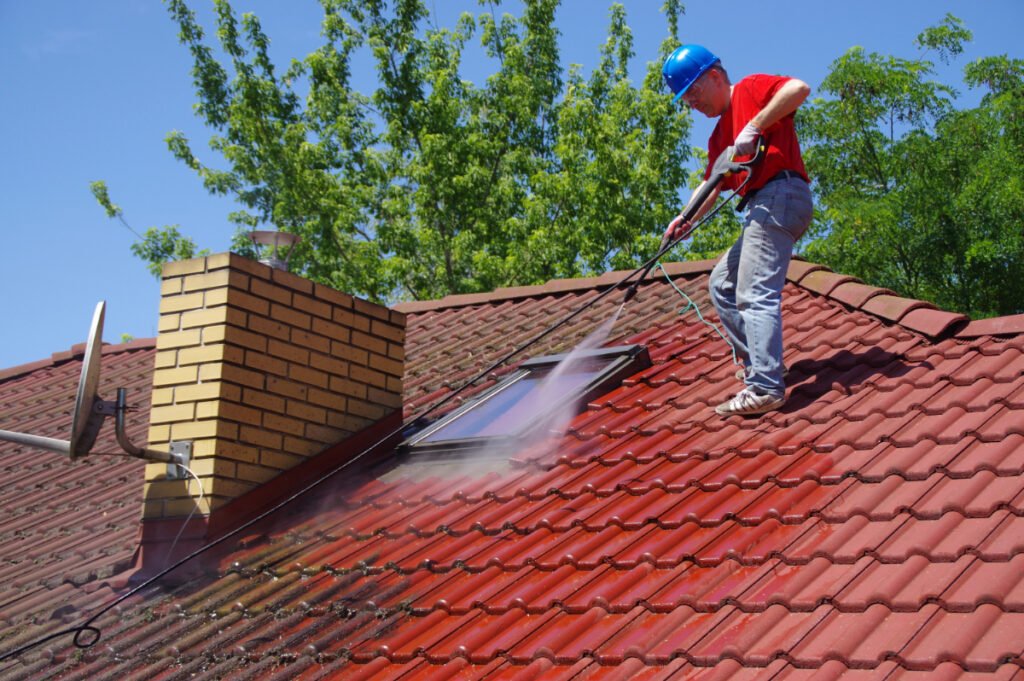
Shingles are very easy to install and repair and can be DIY with simple hammers and pry bars. They don’t need highly skilled labor; you can simply interlock them along the roofline. And you can even remove the damaged shingles and replace them quickly.
In contrast, metal panels need a retrofit and need proper welding by professionals. Plus, you can’t repair them partly and might need to replace the complete sheet on the damage. So, they might be costly to repair.
Apply a thin layer of metal putty over the roof studs and hammer it backward to repair any minor dents along the roofline.
4. Ease of Maintenance
Metal roofs are easy to maintain. You can grease them with silicone or WD-40 for better moisture and weather control. Or, you can caulk them and use a weatherstripping sealant to save them from leaking. So, the repairs are relatively cheaper.
But, shingles must have a roof flashing and gutters to prevent water pooling and fungus. You should also repaint them after 10-15 years and change their underlayer for better adhesion. So, they are a bit costly and labor-intensive to maintain.
Oil the roof shingles with citronella, geranium, and lemongrass oils to reduce the mildew in humid climates.
5. Permits
Most HOAs ( Homeowner’s Associations in America), especially in Arizona and California, don’t allow metal roofs. So, you might face heavy penalties and lawsuits.
But, shingle roofs are permitted everywhere and do not need any permit or zoning charges for installation.
Here are some more points to compare a metal roof and a shingle roof:
| Parameter | Metal Roof | Shingle Roof |
| Cost | $ 3 – 5 / sq. foot; High upfront cost and low long-term cost. | $ 4 – 5 / sq. foot; Low upfront cost and high repair cost. |
| Durability | 50 – 70 years with a low warranty period | 15 – 20 years with a 8 – 9 years warranty period |
| Heating or Cooling | Temperature-sensitive; Retains heat in winter and reflects it in summer. | Retains heat but might not keep the attic cool and dry in summer. |
| Acoustics | Noisy and many vibrations in rain and hail | Absorbs noise; Better acoustics |
| Energy Savings | 10 – 25 % on the cooling costs | Not that energy-efficient |
| Weight | Lightweight; 2 lbs / square foot | Heavy; 60 – 80 lbs |
| Weather Resistance | Withstands heavy rain, wind, snow, and hail easily | Might leak with extreme rain or blow with the wind |
| Environment Sensitivity | Ecological and recyclable up to 95% | You cannot reuse common asphalt or wood shingles |
| Increase in Resale Value | 2 – 6% depending on the metal | 1 – 2% depending on the roof size |
| Variety | About 100 colors, sizes and textures | 10 – 15 colors and textures |
| Retro-fitting | Can be installed over another existing roof | You’ll need to tear off old shingles to place new ones. |
| Labor | Needs professional installers, and skilled labor | Works with unskilled labor; Can be DIY |
| Warranty Coverage | Covers the manufacturer defects and dents | Covers manufacturer and labor error, material defect, fungus and weather damage |
Which Roof Has the Best Fire Resistance?
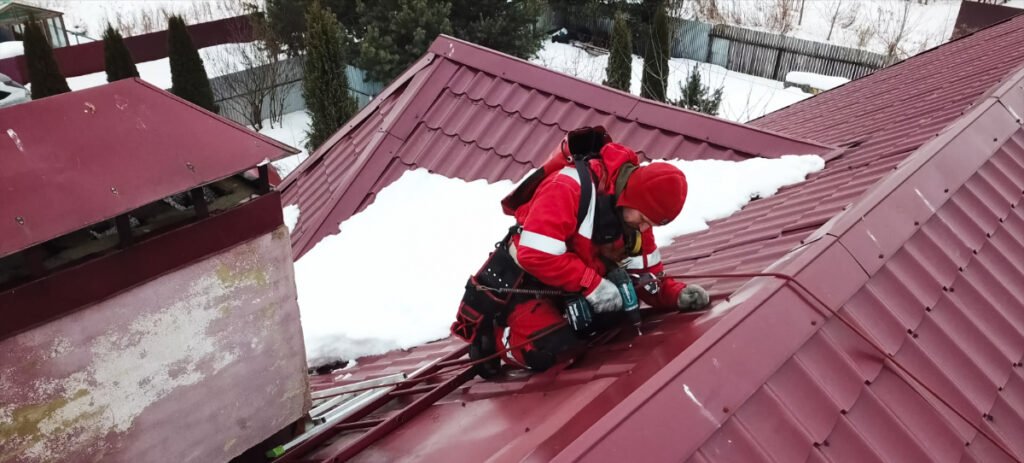
Metal roofs have better fire resistance and usually have a class-A fire rating. That means it won’t catch fire even if hot ashes, sparks, or fumes fall on the roof. So, it’s advisable to use metal roofs in hot and dry areas or near wild forests and woods.
On the other hand, shingles are petroleum-based. So, they can easily catch fire and deform or break with excess heat and fumes.
Coat the shingles with a RAC coating, or paint them with fire-resistant cement or intumescent paint to curb the fire spread.
Which Is the Best Roof to Use in Extreme Climates?
Metal roofs are the best for extreme climates because they expel heat in summer and retain it in winter. Similarly, they don’t dent or warp due to rain and snow. Yes, they are noisy with hail, but you can easily absorb all the noise with thick foam insulation.
But, shingles are more weather-sensitive and need proper surface treatments in extreme climates. But, you can still use thin aluminum or steel shingles along the snowy areas.
Use pipe or ridge vents to maintain the shingles and reduce the snow load in tundra regions.
Which Is the Best Roof for Dry or Sunny Regions?
Shingles are better in dry areas and create a planar appearance that doesn’t shine in the sun. Plus, their underlayer protects the attic from cold and maintains the humidity inside.
But, you mustn’t use polished metal roofs in dry regions as they may have shining and glare problems and disrupt the curb appeal.
Coat the metal roofs with a thin layer of Zincalume and use darker roof colors to reduce the glare in sunny areas.
Which Roof Has Better Energy Efficiency?
Metal roofs have better energy efficiency than shingles. They typically reflect more heat and absorb less heat. So, they keep the roof cooler and reduce air conditioning costs by 10-12%.
On the other hand, shingles are absorbent. So, they need proper venting and air conditioning to drive off the exhaust.
Tips for Picking the Best Roof for Your House
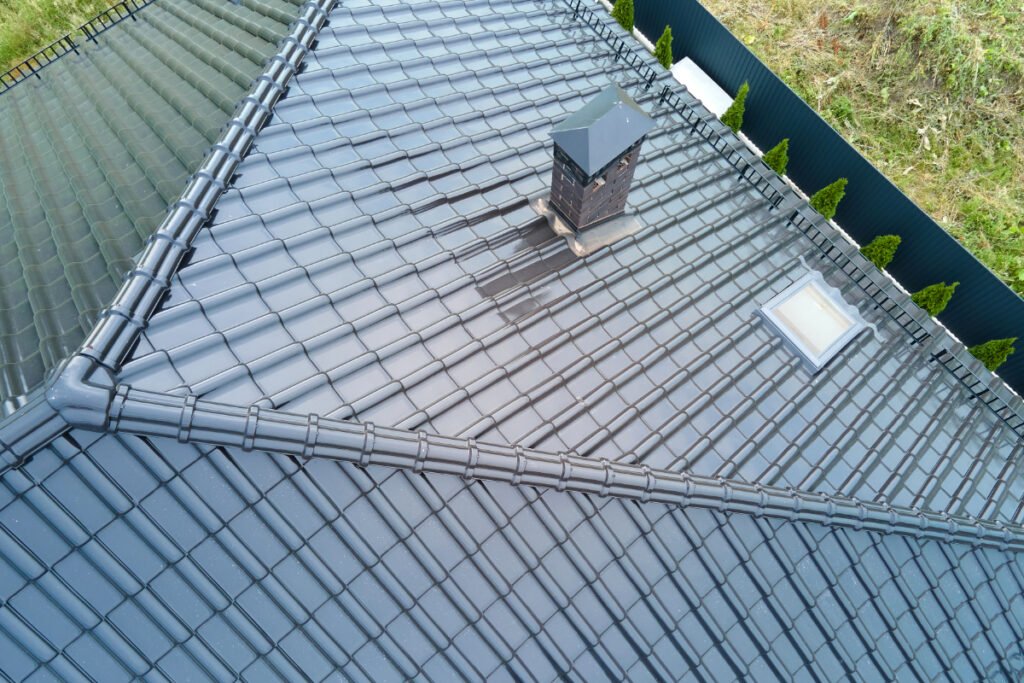
- You can use metal roofs for complex or multi-layered roof lines. But you must use shingles for simple pitched and gable roofs.
- Use shingle roofs for better noise absorption in hail or wind-prone regions. But, prefer metals in rainy or snowy areas.
- Pick metal roofs if you live near woods or sites prone to forest fires.
- Choose metal roofs for contemporary homes and pick shingles for a traditional aesthetic.
- Select shingles if you live in the countryside and don’t have skilled labor around.
- Use metals for better energy savings in extreme climates, but prefer shingles in even coastal areas.
Are Metal and Shingle Roofs Ecofriendly?
Metal roofs are eco-friendly and can recycle about 90% of the material. They even reduce heating and cooling costs and save more energy. But shingles aren’t biodegradable and are made from petroleum jelly that harms the environment.
Is Metal Roofing Noisier Than Shingles?
Metals are generally noisier than shingles and create a tip-tap sound in rain and hail. But, you can treat them with various insulation pads and rigid foam boards to absorb the noise.
Are Metal Roofs Long-Lasting?
Metal roofs are extremely long-lasting and last for about 50 – 70 years, thrice the lifespan of typical shingles. And you can further galvanize or paint them to reduce the weathering and damage.
Metal roofs and shingle roofs are incredibly versatile and user-efficient. But, metal roofs have better climate control, whereas shingles have better ventilation. Similarly, metal roofs are light and modern. In contrast, shingles are thick, heavy, and more insulated.
So, you can use our table and compare the roofs to pick the best one for your needs and climate. But what about the total installation costs and resale value? Well, don’t be confused! Just jump to our guide on ‘Is a metal roof cheaper than shingles’ for more cost insights!

